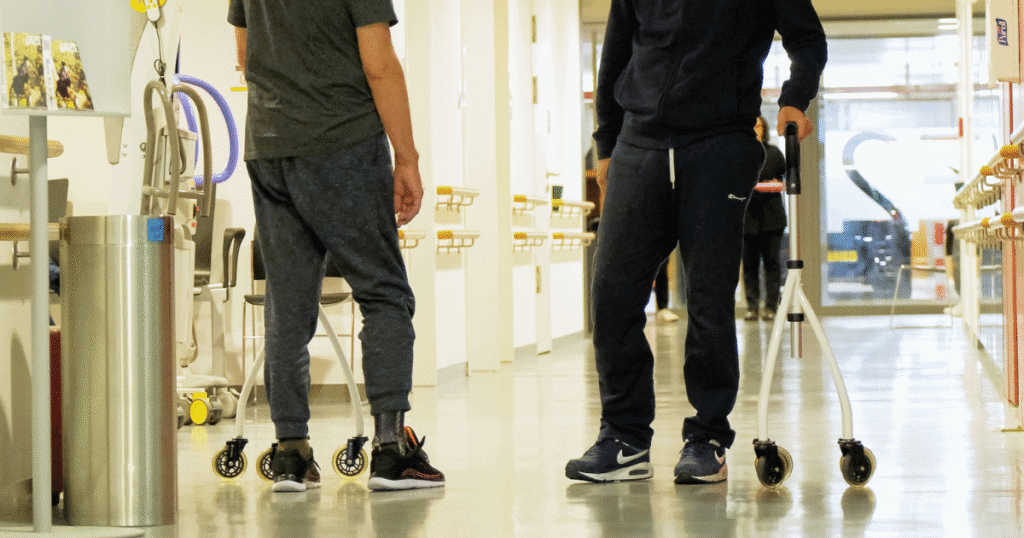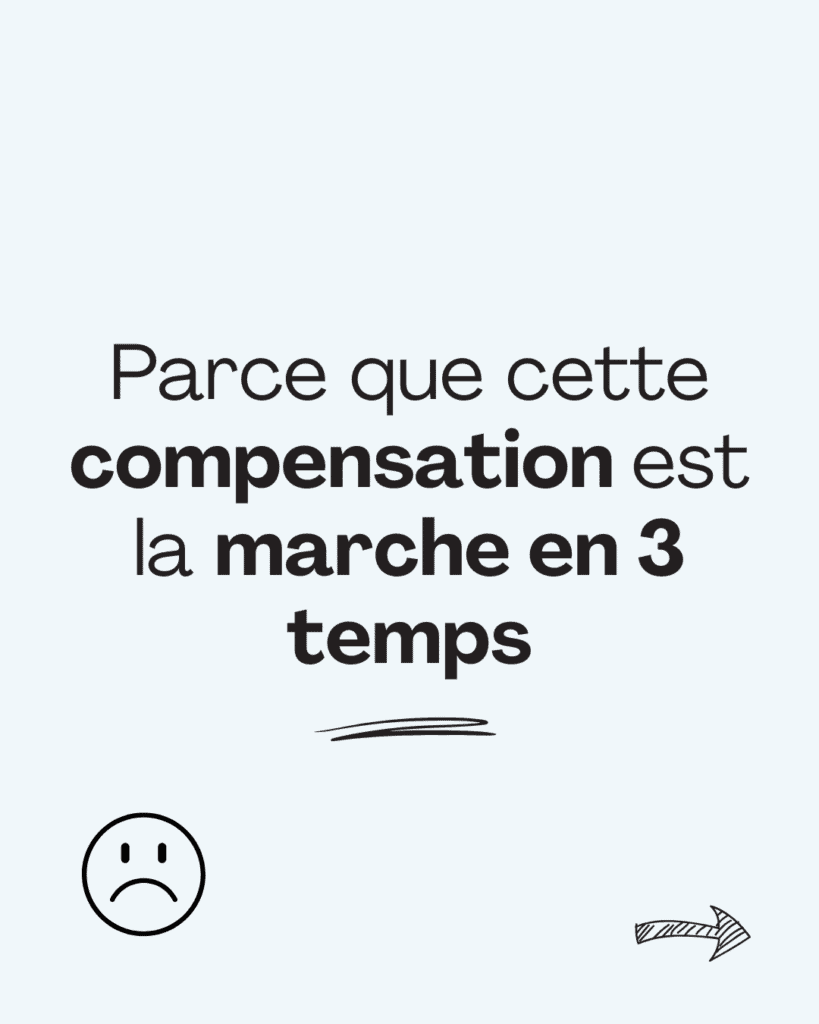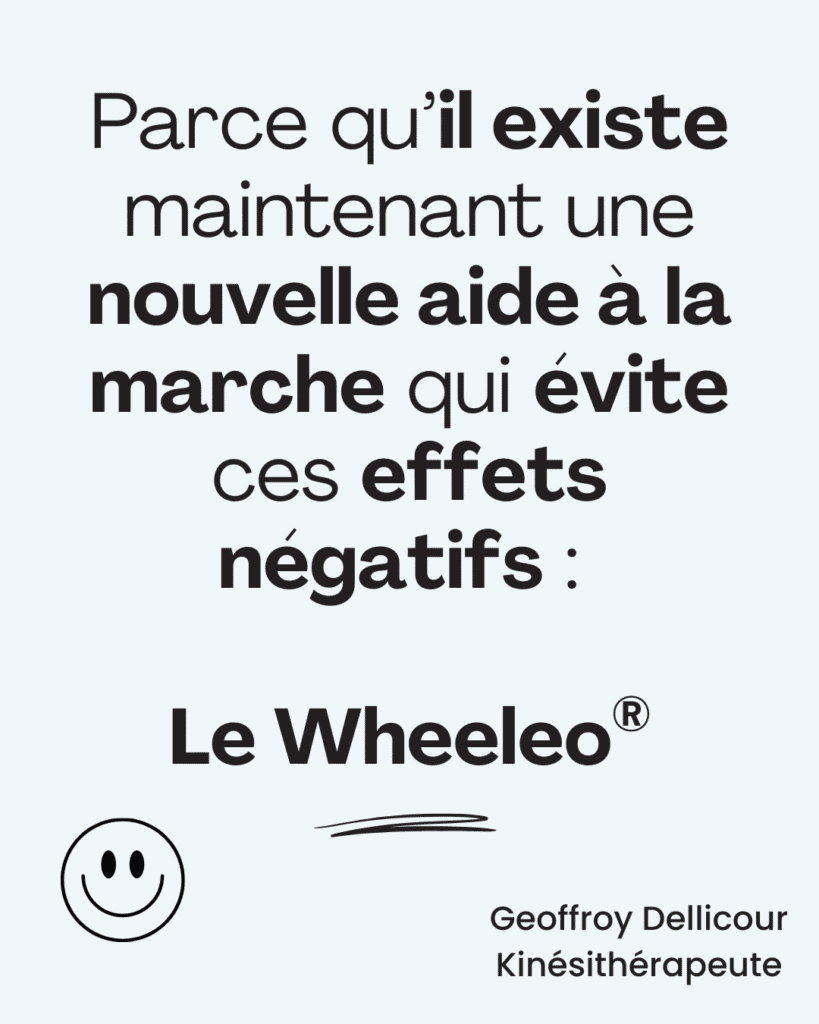
For decades, the tripod cane has been almost systematically prescribed to patients with precarious balance, particularly in cases of hemiparesis or hemiplegia. Its popularity is based on simple arguments: a wider base of support, a more stable handle, and the ability to stand alone when released. For a hemiplegic patient, this seems reassuring: if the cane falls, they are at increased risk of falling while trying to pick it up.
But this reasoning deserves to be re-evaluated.
One of the most common walking patterns with the tripod cane is the “three-point gait”: moving one leg, then the other leg, then the cane. This breakdown of the gait cycle allows the patient to always maintain double support — an adaptive solution to avoid the feeling of instability induced by single-leg support.
This pattern quickly becomes automatic. And like any effective compensation, it is positively reinforced by the immediate benefits it provides: safety, balance, reassurance. But in the long term, it moves away from the physiological pattern, slows motor progression, increases asymmetry, energy expenditure, and, paradoxically, instability.
The more this pattern is repeated, the more difficult it becomes to deconstruct. This is called negative learning. For the rehabilitator, this complicates the task: a well-established compensatory pattern must be unlearned before teaching a new coordination. This takes time… and energy.
However, removing a compensation requires eliminating its cause. Not masking it. Giving an instruction (“try to walk in two steps”) or manually correcting the gait is not enough: if the need for double support persists, the compensation will return — or be replaced by another, sometimes more complex one.
In response to this observation, an innovative mobility aid has emerged: the Wheeleo®. This one-handed walker combines the maneuverability of a cane and the stability of a four-wheeled walker. Its support is constant on the ground, regardless of inclination, thanks to its multidirectional wheels. The patient can thus regain a two-step walking pattern, fluid, symmetrical, and closer to natural movement: right foot + Wheeleo®, then left foot + Wheeleo®.
The need for double support is respected, but without imposing compensation. And that changes everything.
In a rehabilitation journey, the Wheeleo® ideally integrates between walking with a handrail and using a crutch. It avoids the pitfall of three-point gait and reduces the risk of negative learning. When the patient has progressed — that is, when they can spontaneously adopt a two-step gait as stable with a simple crutch — the use of the Wheeleo® can be naturally discontinued.
If sufficient recovery of the paretic upper limb occurs, a two-handed walker can be considered for outdoor movements.
“Today, it’s time to question the” systematic use of the tripod cane for hemiplegic patients. Other solutions exist, more respectful of natural walking mechanisms and more effective in avoiding harmful compensatory patterns.
The Wheeleo® is one of them. Integrating it into the rehabilitator’s toolkit offers patients a chance to progress faster, further — and to walk better.








Please fill in this short form so that we can contact you to arrange a test.